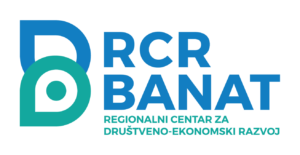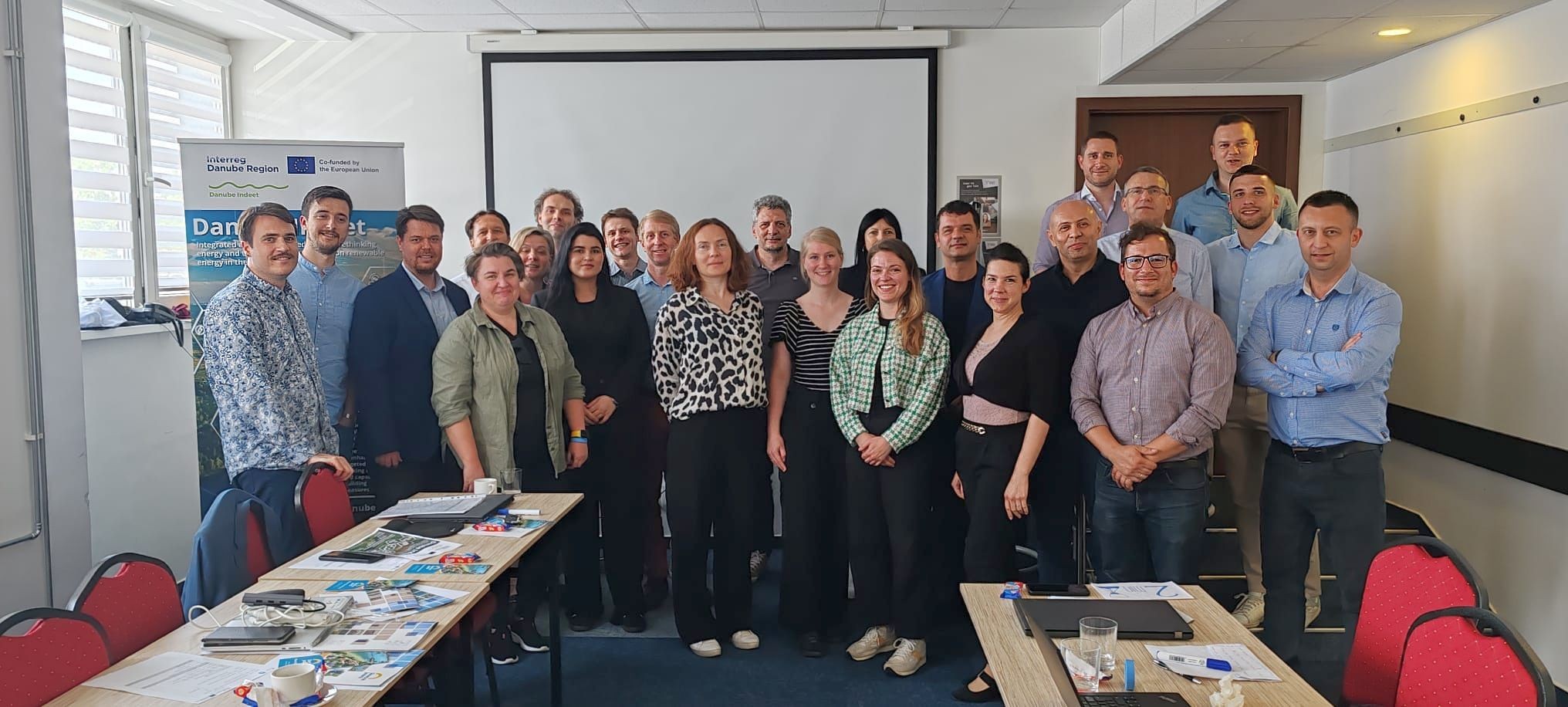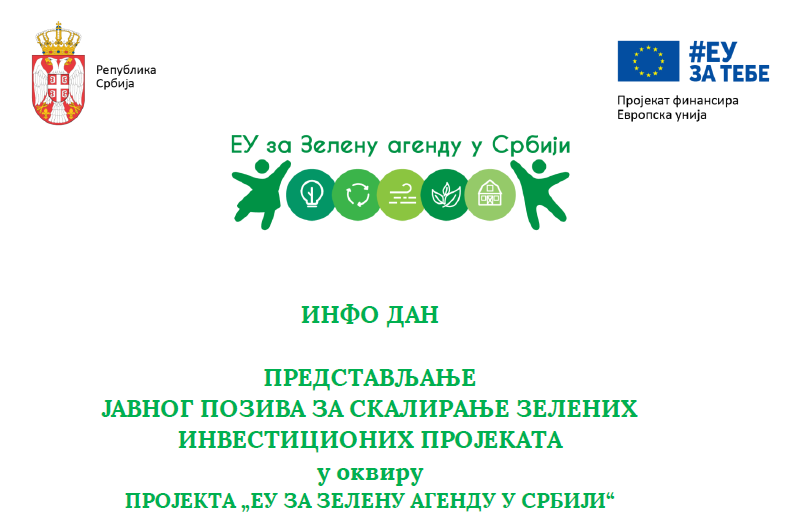Innovative model to drive energy security and diversity in the Danube Region via combination of bioenergy with surplus renewable energy

The Danube Region holds huge potential for sustainable generation and storage of renewable energy. However, to date this region is highly dependent on imported fossil uels (mainly gas from RU), while energy efficiency, diversity and renewables shares are low. General share of fossil fuel energy consumption is above 65%, while the share of renewable energy remains alarmingly low, at about 20%. Additionaly renewable energy is mainly associated with electrical power showing the need for a link to heat and especially transportation.
In line with the EU climate targets for 2030 and the EUSDR PA2 goals DanuP-2-Gas will advance transnational energy planning by promoting generation and storage strategies for renewables in the Danube Region by coupling the electric power and gas sector.
DanuP-2-Gas will bring together energy agencies, business actors, public authorities and research institutions in an effort to develop a common transnational strategy that builds upon gas-electricity sectors coupling, which will be achieved through 4 main project actions:
Danube Energy Platform that will enable knowledge transfer in the field of sector coupling.
Biomass potential and infrastructure assessments that will provide data relevant for the sector coupling based on biomass and renewable energy.
Evaluation of political and legal situation in all Danube Region countries with the goal to provide a common long-term strategy all countries in the Danube Region can implement.
Useful tools that will help assess the whole Danube Region with respect to potential locations for sector coupling hubs.
HOW DANUP-2-GAS WAS BORN
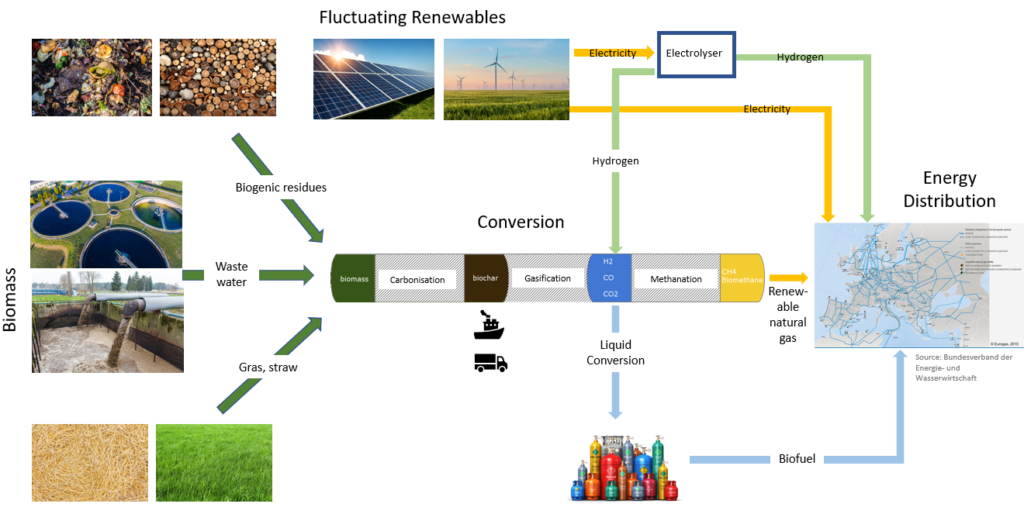
The project idea emerged, since most of the countries in the Danube Region highly depend on gas imports, mainly from Russia. This leads to low energy security and efficiency as well as low renewable energy share. Since there is a huge, but unused potential for sustainable energy production via wind, solar, geothermal or biomass, the project aims to inform potential investors and potential partners for future projects about the renewable energy possibilities of the region.
The focus lies on biomass, since the share of bioenergy is estimated at 57.8% in 2020 and therefore holds great possibilities not only for cleaner energy and more energy security in the region, but also for lucrative investments in the bioenergy sector. The project also considers existing gas and electricity grid for energy distribution and storage as a foundation for future projects.
The project’s approach to increasing the share of biofuels and bioelectricity is sector coupling. Sector coupling is the link between heat, electricity, and mobility sector. The approach the project takes at sector coupling is to use electrical energy to produce hydrogen, which can be used for mobility purposes, for heating, or for direct production of electricity and heat. Electrolysers convert renewable energy into hydrogen. It can be transformed into methane which is the main component of natural gas. The renewable natural gas can be used the same way as natural gas is being used today and can also be compressed or liquefied.
The concept of the project also includes the vast amounts of biomass, such as municipal/ industrial organic waste, wood residue, sewage sludge and agricultural byproducts e.g. straw. The biomass is transformed into biochar through carbonization. Since biochar has a higher energy density and reduced weight compared to biomass substrates with their water content, it can serve as a mean for transportation of the energy stored in the biomass. Ships and trains can transport the biochar to central hubs where gasification of the char produces syngas rich in hydrogen, carbon dioxide and carbon monoxide. The gas can be transformed into methane preferably by biological methanation as it omits harsh reaction conditions and expensive catalysts sensitive to decay and inactivation by impurities present in the syngas.
SUCCESSFUL (VIRTUAL) KICK-OFF OF THE DANUP-2-GAS PROJECT!
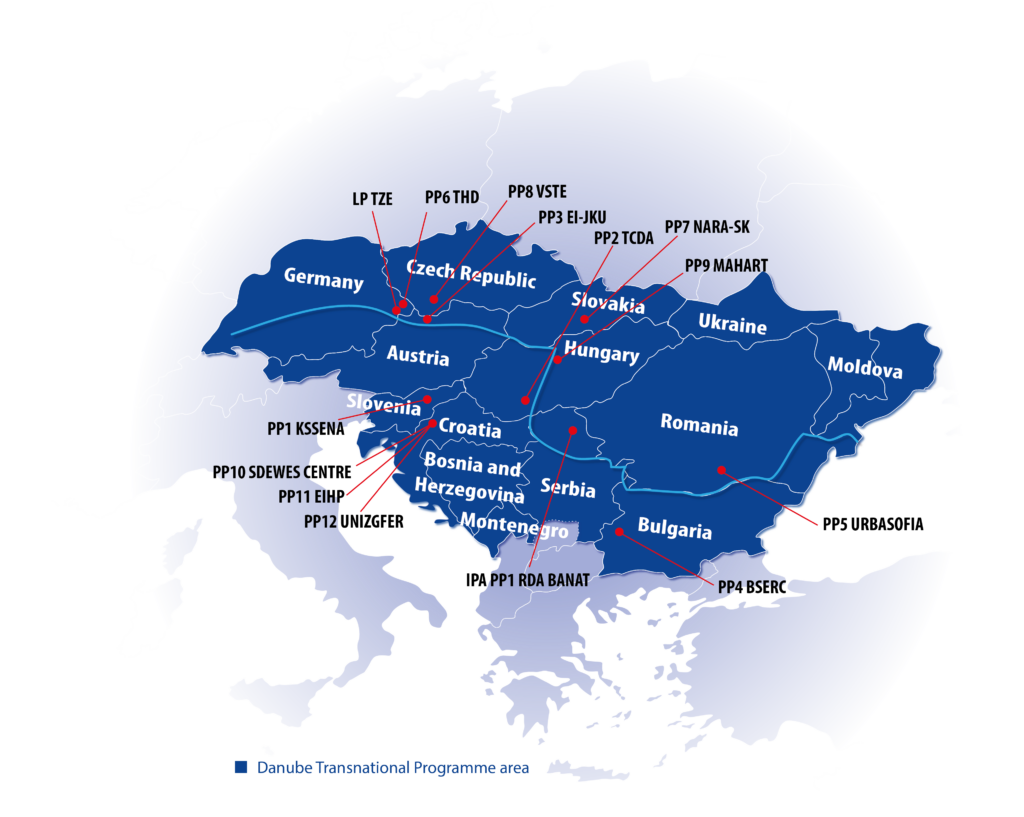
On September 30th, 2020, the Technology Centre Energy hosted the Kick-off event for the DTP-project DanuP-2-Gas. The main goal of the meeting was to officially start the project and to present it to the public. Unfortunately, due to the current situation, the event had to be held via Zoom. During the event, the project in general, the background, the planned outputs as well as the different work packages to achieve the goals were presented. Furthermore, representatives of the financing and associated partners introduced their institution.
Since the meeting had to be held online, the focus of the meeting shifted towards presenting and discussing measures for the implementation of the project. Work package leaders pointed out the content of their work packages including outputs, activities, and deliverables and how they are planning to implement them.
Follow us to see what our first steps will be!
For further Information about the project and the activities visit DanuP-2-Gas website
http://www.interreg-danube.eu/danup-2-gas
Contact us at: info@kssena.velenje.eu and Astrid.Heindel@haw-landshut.de


